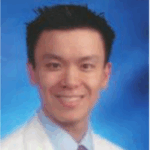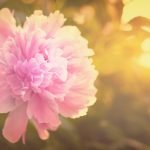Prolotherapy Through Ozone
Eric Chan, ND
Traditionally, there have been two ways in which our naturopathic medical skills have contributed to the field of orthopedic medicine. First, there are nutraceuticals which can decrease pain and inflammation and promote healing. Second, there are interventional methods that stimulate the body’s own regenerative and healing mechanisms.
Everyone is already well-versed in the familiar uses of nutrients such as bromelain, Wobenzym, glucosamine sulfate and copper, and their use in injury recovery and the slowing of degenerative disease. There has also recently been an increased interest by both conventional and naturopathic physicians in the use of regenerative therapies such as prolotherapy that, through stimulation of various growth factors, results in permanent reduction in pain through the deposition of collagen and cartilage.
Traditionally, strong proliferants and sclerosants had been used such as phenol and sodium morrhuate. Many physicians are leaning towards hypertonic dextrose (>10%) as a proliferant as this has been shown to be one of the safest. Recently, the use of ozone gas as a proliferant has been used with great ease and success. This has proven to be an excellent alternative and a very versatile tool in that ozone as a gas rapidly diffuses through the tissues. This somewhat lessens the number of injections necessary per session and is usually less painful to the patient. Ozone used in major autohemotherapy has definite effects on energy production through the increase of 2,3-Diphosphoglycerate (2,3-DPG) and the stimulation of the citric-acid cycle with the increase in delivery of NAD and NADPH to the mitochondria.
The organic phosphate 2,3-DPG is necessary for the unloading of oxygen at the tissues, and the increased delivery of mitochondrial substrates ensures that sufficient ATP is formed. It’s possible this effect partly explains the excellent results of ozone use in orthopedic medicine. With increased stimulation of ATP production, the healing process initiated by prolotherapy with ozone is more likely to be successful in the relief of pain.
The use of ozone in prolotherapy (or Prolozone for short) is extremely versatile. It has been most useful in osteoarthritic knees, chronic lower-back pain, rotator cuff tears, ankle sprains (especially chronic cases that have progressively become weakened), SI joint dysfunction and myofascial trigger points. The general dosage of ozone used is 20-30 µg/mL at a total volume dependent on the joint or tissue size. Usually the area is pretreated with a solution consisting of procaine 2%, traumeel or zeel and B12. The procaine and the homeopathics are usually in a 1:1 ratio, with 1-2 mL of total B12 added.
Once the solution is injected, the needle is stabilized with a hemostat, the syringe filled with the ozone is loaded, and subsequently the injection is completed.
In general, osteoarthritic knees can be treated very successfully. It is a very simple injection technique that involves a medial approach into the knee capsule. Generally, 5 cc of the pre-treatment solution is injected, followed by 10 cc of injected ozone gas. There is usually a sensation of “fullness” to the patient, and later in the day, there may be some significant pain. However, there is usually also significant relief after the first few treatments, and even patients who have had no relief with NSAIDS and were candidates for surgery, respond remarkably well early on. This has made osteoarthritis of the knees one of the most rewarding conditions to treat. (Dr. Shallenberger notes that sometimes he adds growth hormone after the ozone, but I have never found this to be necessary.)
A case example involves a 65-year-old female who I was treating with chelation therapy. In casual conversation, she mentioned that she could no longer sit on the floor at the mosque. This had been causing her some distress as previously she was able to fully partake in religious celebrations. X-rays indicated a knee replacement would be needed in the next few years. After the first injection, she complained of fullness that changed into radicular pain that persisted for two to three hours. Three days after the injection, she noted that her knees did not have as much crepitus on movement. After two more injections, spaced two weeks apart, she was able to sit on the floor in the mosque for at least 45 minutes at a time.
The shoulder joint also responds remarkably well to this treatment. Even patients who have had chronic pain for years, do well with just a few injections. Sometimes the post-treatment pain is quite severe for one or two days, then mild to moderate improvement occurs, with the pain to recur after a few days of relief.
If the second injection can be done before the pain has reached baseline, results can be remarkable. Usually a posterior approach to the shoulder capsule is used, below the acromion and towards the coracoid process. Again, 3-5 cc of the pretreatment solution is added, followed by 5 cc of ozone.
While the injection is painful compared to traditional prolotherapy with liquid proliferants, the number of injections per session is drastically reduced and usually well-tolerated.
Another case involves a 35-year-old female who complained of shoulder pain, knee pain and symmetrical wrist and finger pain and was seronegative for rheumatoid factor (RF). She fit the criteria for rheumatoid arthritis (RA) based on symptoms and history. Another physician had placed her on an elimination diet. She was extremely hesitant to do systemic treatments for RA. After two weeks of elimination, all pain was gone except a very persistent shoulder pain that radiated into her neck and temple. After the first treatment, there was pain for two days that culminated in a migraine attack. Following these two days, the pain was roughly 60% better for the rest of the week. She was treated again that week with minimal aggravation. After the third treatment, she stated her pain had disappeared.
Chronic lower-back pain can often be reproduced by deep pressure over the iliolumbar ligament. If pressure in this area reproduces pain, a trial injection of the pretreatment solution may indicate whether or not ozone as a proliferant should be used. Usually 5 cc of the solution is injected into both the right and left ligament, followed by 5-8 cc of the ozone gas. This is another area of pain that responds dramatically well and early on. Traditional prolotherapy injections into the lower back are numerous and painful, and thus a trial of the prolozone treatment may be warranted first.
A 43-year-old female under treatment for fibromyalgia and mercury toxicity was consistently wearing a heavy plastic lumbar brace that was laced up over the abdomen. She stated that without the brace, her lower back would feel weak and hurt if she sat in the chelation chair for longer than 30 minutes. She experienced similar pain when standing for extended periods of time.
Treatments were given to both iliolumbar ligaments with no perceived pain or aggravation. After five treatments, she noted that she definitely felt stronger in the lower back and was able to use the brace much less. But the treatments had to be discontinued as the patient was convinced the ozone was causing her insomnia.
Many physicians are already familiar with the treatment of trigger points by both injection and/or acupuncture. Oftentimes, five to ten treatments with any solution (traumeel, saline, B12 or a local anesthetic) will give good results. If, after the first one to two treatments the patient is still presenting with the same amount of pain, it is worth adding ozone (1-2 cc per trigger point) to the protocol. Often, if there is a myofascial band present as opposed to isolated points, the ozone will have a much more successful outcome than other injections.
In terms of orthopedic techniques, prolozone is perhaps one of the most powerful regenerative techniques out there. It gives fast, permanent results and is relatively easy to learn.
Note: There is a course by Frank Shallenberger, MD on both general ozone therapy and prolozone at www.oxygenhealingtherapies.com. It is well worth taking if you are interested in incorporating this technique into your practice.
 Eric Chan, ND has a BSc in Chemistry from UBC and an ND from CCNM. He is in private practice in Richmond, BC.
Eric Chan, ND has a BSc in Chemistry from UBC and an ND from CCNM. He is in private practice in Richmond, BC.









